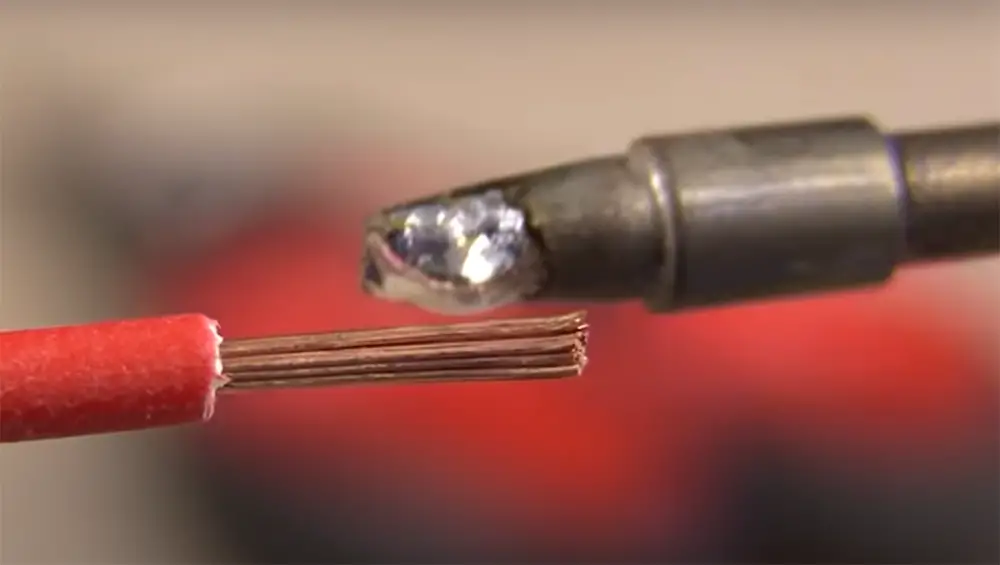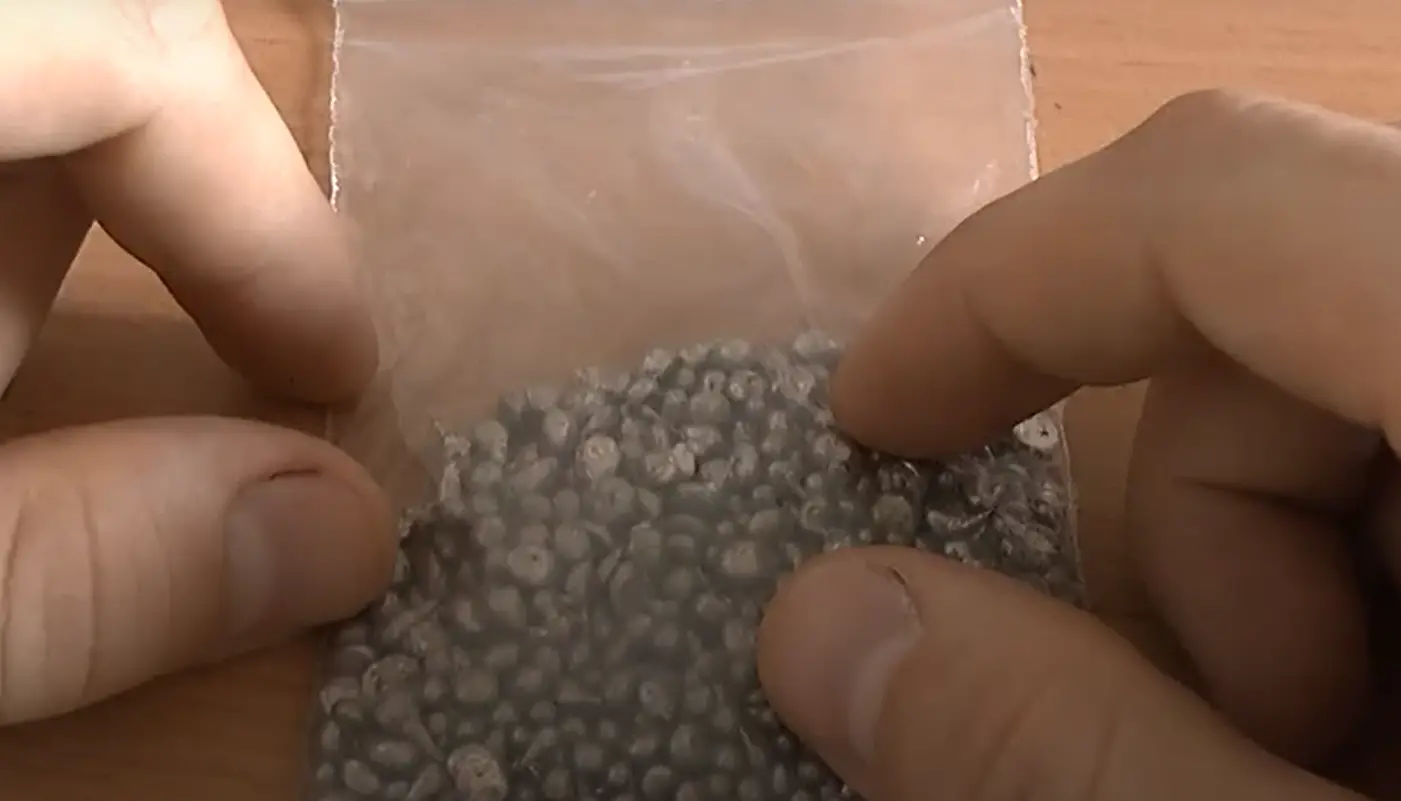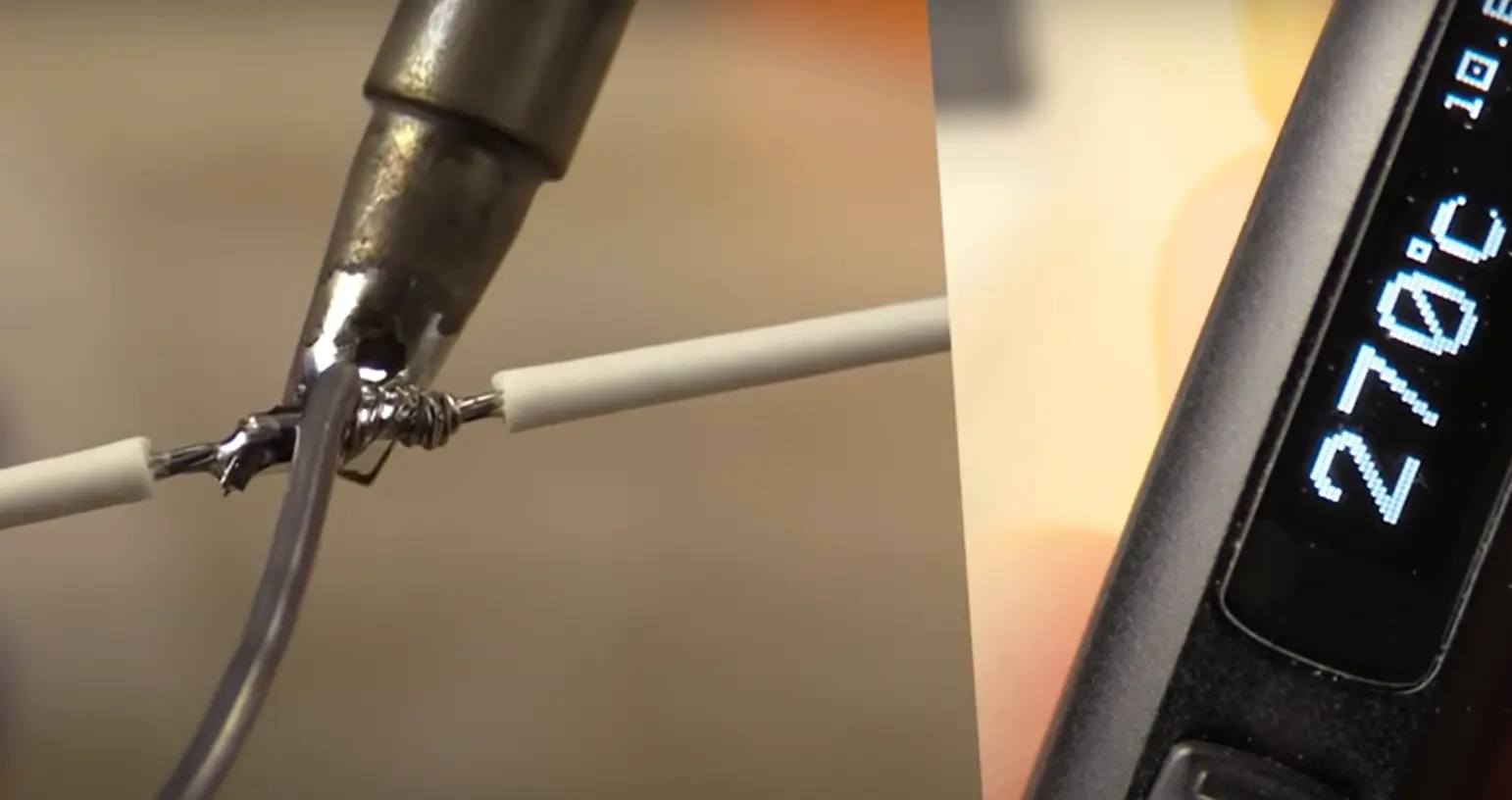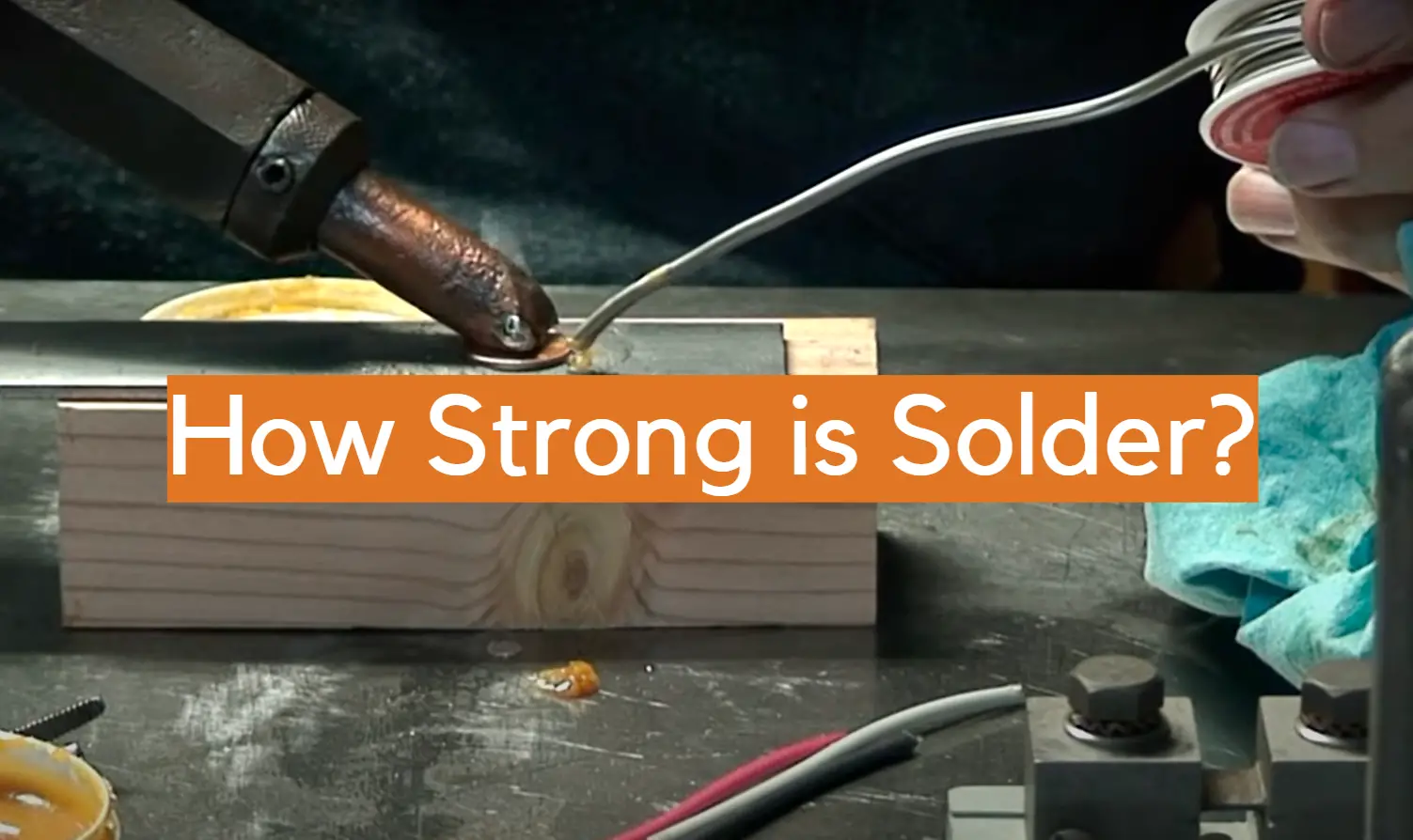Solder is a metal alloy that melts at low temperatures and has the ability to create strong bonds between metals. Solder is mainly used for electrical connections, although it can also be used as an adhesive. The strength of solder depends on its composition, the temperature at which it’s applied, and how much time it has to cool before being touched.
What is the Strength and Hardness of Solder?
Solder is a metal alloy that consists of tin and lead. It has a melting point between 800 degrees Fahrenheit [1], depending on the type of solder used. These temperatures are high enough so as not to damage most electronic devices when soldering them together.
Its strength is dependent upon its intended use in addition to how it was manufactured. In general, though, solder resists stretching well due to its malleability along with being able to withstand compression forces without breaking apart.
Because of the lower temperature and diverse alloys used as fillers, there is a limited metallurgical reaction between filler and workpiece, resulting in a less robust connection. The alloy with 63 percent tin and 37 percent lead (or 60/40, which is nearly identical in melting point) has been the favorite for electronics manufacture. This eutectic alloy has a lower melting point than either tin or lead.
Because tin is wet and clings to a wide range of base metals at temperatures far below their melting points, it is an essential component in solders. Small amounts of various metals, such as antimony and silver, are added to tin-lead alloys to improve their strength. Insulation of wire shielding with 60-40 lead reduces electrical noise while making joints.
There are also high-tin solders, which are used to connect parts of electrical equipment since their electrical conductivity is superior to that of high-lead solders. These solders are also employed in places where lead may be harmful, such as in touch with drinking water or food.

Types of Solder-Based on Alloy Composition:
1) Lead Alloy Solders
A number of alloys are used to make solders, but the alloy with 63 percent tin and 37 percent lead (or 60/40) has been the most popular.
This alloy is designed for use in electronics because its melting point is low enough so as not to damage components when it melts during the joining process, yet high enough so that there will be no detrimental effects from the heat on surrounding devices or materials.
The same solder can also be reused which makes it more cost-effective than other types of solder such as silver-bearing solder where a separate material must be purchased each time you need to attach something since once this type is applied and cooled, it cannot safely be re-melted. High-temperature rosin core acid fluxes are designed to slow oxidation and help the solder flow over a surface.
Solder wire can be either solid or stranded depending on how it is manufactured, but most electronic-grade solders come in a thin hollow tube that is filled with flux and cut into small pieces using wires.
The weight of this type of solder ranges from 0.05 oz for 60/40 alloy up to about 0.75 oz for silver-containing types such as SAC alloys used in military applications which contain larger amounts of noble metals such as gold or palladium along with lead when compared to standard electronics solders [2].
2) Lead-Free Solders
Most lead-free alloys have melting points about 392 degrees Fahrenheit which is about 58 to 212F below the temperature needed for softening rosin core solder containing 63 percent tin and 37 percent antimony.

This difference makes working by hand more difficult since you will need higher temperatures than when using conventional solders that use traditional eutectic alloys such as 60/40.
Lead-free solder may be undesirable in high-value applications such as aerospace and medical projects since its properties are less well understood.
The Sn-Ag-Cu (or SAC) solders are used by two-thirds of Japanese manufacturers for reflow and wave soldering, and by around 75% of firms for hand soldering. The common usage of this popular lead-free solder alloy family is due to the lower melting temperature of the Sn-Ag-Cu ternary eutectic behavior (423F) [3].
3) Flux-Core Solders
When you purchase solder wire, it is not filled with flux. Before using the product for soldering, a small amount of rosin-based paste containing zinc chloride and other chemicals must be applied to one end and heated in order to melt the solder. So that it fills up the hollow tube or forms into beads along the length of each strand.
The mixture often contains lead oxide that helps reduce contamination as well as providing an extra measure of corrosion control since water will form hydrogen gas when mixed with molten tin but hydrogen embrittlement can still occur if moisture penetrates through cracks where contaminants such as dust may accumulate.
It’s also used when brazing stainless steel.
During heating, the flux undergoes physical changes and becomes transparent at about 1100F [4]. This is an indication that the parts are near the brazing temperature.
4) Silver-Alloy Solders
The silver content in solder alloys typically ranges between 30 percent and 90 percent, with the remainder being tin. The silver acts as a catalyst that helps reduce oxidation at high temperatures while increasing electrical conductivity making it perfect for soldering aluminum or copper-based components that are commonly found on circuit boards.
Silver brazing, often known as “hard soldering” or “silver soldering”, is a low-temperature brazing technique that uses rods with melting points ranging from 1145 to 1650F. The thermal conductivity of aluminum alloys is significantly lower than that of copper alloy brazing filler metals [5].
Type of Solders-Based Form Factor:
Bare Wire or Fluxless Solder
Fluxless solder is made of an alloy containing 98 percent silver and 2 percent copper. It is used for making quick connections between bare wire or tin-plated components, then washing it with water to remove excess material that may cause shorts.

Flux-Coated Solder
Flux-coated solder contains a fluxing agent that ensures the removal of oxidation from metal surfaces, allowing for low resistance electrical joints. It is often used when working with plastics or other nonmetals since it does not leave behind any residue.
Flux-Impregnated Solder
Flux-impregnated solder contains a fluxing agent that ensures the removal of oxidation from metal surfaces, allowing for low resistance electrical joints. It is often used when working with plastics or other non-metals since it does not leave behind any residue. The difference between this type and fluxless counterparts is that no washing will be required after soldering.
The percentage of lead in solder alloys typically ranges between 30 percent and 90 percent, with the remainder being tin.
Comparing Joining Techniques:
Silver Soldering Vs. Soft Soldering Method
The term “silver soldering” refers to joining two or more components with the melting and flowing of filler metal into the junction. The filler metal has a melting point greater than 788F, which enters the joint through capillary action.
A silver soldered connection is made up of multiple layers that are metallurgically bonded to the surfaces of the joined components and is quite sturdy – much more so than soft soldering.
Because the filler material frequently contains silver, it’s called “silver soldering” [6].
Silver Soldering Vs. Brazing
Silver solder is a form of brazing that works by drawing itself into the connection via capillary action. So, for example, if you want to join two small sheet metal pieces together, you’ll need to overlap them.
The silver solder will be fed through the joint, filling in the tiny crack between the two pieces of metal, and bonding with the surfaces to connect them. If you try to mash the two pieces of metal together, there just wouldn’t be enough surface area touching to produce a good seal.
A flux is used in conjunction with silver solder to clean the metal and keep it clean during the silver soldering process. Silver Brazing, or Silver Solder, is another name for it.
On the other hand, Braze is created on the surface of the metal being joined rather than drawn into it, resulting in a weld-like appearance. The Braze substance bonds with the surface of the metal being joined in much the same way as Silver Solder does.
A flux is used to clean the metal and maintain it clean throughout the brazing procedure.
Bronze welding, or braze, is another name for brazing.
What silver solder & braze have in common is that neither involves melting the metals being joined, which is welding [7].
Welding Vs. Brazing Vs. Soldering

Welding is the process of melting and fusing similar metals with a filler material to create a weld. A weld is produced by concentrating intense heat on a junction. This weld is stronger than the components it unifies. Furthermore, the heating temperatures are greater than the melting points of the base metals and filler materials.
The filler material in brazing is melted by the heat, which causes the metals to come together via capillary action. The resultant connection is sturdier than the base metals. Because the brazing temperatures are lower, they do not melt the underlying components. These temperatures are also well below those of the base metals’ melting points. In addition, as opposed to welding, brazing can join or fill diverse metals.
Soldering, on the other hand, is a technique for metal connection or filling that takes place at lower temperatures. The molten filler uses capillary action to merge base metals together in this example.
However, the resultant connection is less strong than the base metals themselves. Finally, this approach may be used to join or fill both met and non-metals [8].
Strength Comparison of Various Types of Solder
Solder is an essential material used in electronic circuitry and other manufacturing industries. It is a metal alloy used to join two metal surfaces together. The strength of a solder joint depends on various factors, including the type of solder used. In this table, we compare the strength of different types of solders based on their ultimate tensile strength and shear strength.
The table below provides a comparison of the strength of various types of solder. The ultimate tensile strength refers to the maximum stress a material can withstand before breaking under tension. Shear strength is the maximum stress a material can withstand before breaking under perpendicular stress. The table shows the ultimate tensile strength and shear strength for different types of solder, including lead-based, lead-free, and flux-core solder.
| Type of Solder | Ultimate Tensile Strength (MPa) | Shear Strength (MPa) |
|---|---|---|
| Lead-based | 40-50 | 20-30 |
| Lead-free | 30-40 | 15-25 |
| Flux-core | 35-45 | 20-30 |
As we can see from the table, lead-based solder has the highest ultimate tensile strength, followed by flux-core and lead-free solder. However, the difference in strength is not significant, and all three types of solder are suitable for most applications. When it comes to shear strength, all three types of solder have similar strength levels, with flux-core solder having slightly higher strength than the other two.
The type of solder used for a specific application depends on various factors such as the type of metal being joined, the manufacturing process, and the environment in which the joint will be exposed. However, this table provides a helpful comparison of the strength of different types of solder, which can be useful when selecting the appropriate type of solder for a specific application.
Learn more guides to improve your soldering skills:
FAQ
1. What is the strength of a solder?
The strength of solder is determined by what it’s made from, typically a combination of tin and lead.
2. How strong is regular solder?
The maximum tensile strength of soft solder – 60-40 solder is significantly affected by temperature, with a value of 56 MPa for 66F. The ultimate tensile strength is the maximum stress that a structure in tension may withstand. This is equivalent to the maximum stress that can be supported by a structure in tension on the engineering strain-stress curve [9].
3. Is solder strong enough to hold metal together?
Yes, solder is strong enough to hold metal together.
4. How strong is soldering vs welding?
Soldering and brazing are the most durable welding joints, followed by welded joints. Soldering requires roughly 840F, while welding necessitates a temperature of 6500F. In welding, the steel base and working pieces are heated and melted. There is no need to heat the workpieces during soldering [10].
5. How strong is a copper solder joint?
Solder is the material used to join metal parts, often for plumbing purposes. It has a lower melting point than iron or steel so it can be melted by less expensive equipment, making it suitable where high heat would damage other components. Copper solder joints are stronger when they have been allowed time to cool.
6. What is soldering flux?
Soldering flux is a chemical that helps to clean the surface of metals and remove oxides. It also provides good adhesion between solder, metal pieces being joined together, and other soldered joints in an item [11].
7. What metal can’t be soldered?
Certain metals can’t be soldered, such as aluminum and magnesium [12]. Aluminum can corrode when in contact with solder, and it is also a poor conductor of heat. Magnesium has similar properties to aluminum but may catch fire or explode if heated by an open flame.
8. Why does my solder not stick?
There are many reasons why solder may not stick. The most common is that the surface of your workpiece has dirt, grime, or oxidation on it. This can be easily solved by cleaning off all areas with mild abrasive and then applying flux to the surfaces before trying again.
Useful Video: How STRONG is a NEWBIE Solder Connection??????
References:
- https://material-properties.org/what-is-strength-and-hardness-of-soft-solder-60-40-solder-definition
- https://material-properties.org/what-is-strength-and-hardness-of-soft-solder-60-40-solder-definition
- https://en.wikipedia.org/wiki/Solder#Lead-free
- https://www.harrisproductsgroup.com/~/media/Files/PDF/Requested%20Resources/GuidetoBrazingandSoldering.pdf
- https://weldguru.com/silver-brazing/
- https://www.uvm.edu/riskmanagement/silver-soldering
- http://www.thewelderswarehouse.com/blog/silver-solder-braze/
- https://rxmechanic.com/welding-vs-brazing-vs-soldering/
- https://material-properties.org/what-is-strength-and-hardness-of-soft-solder-60-40-solder-definition
- https://www.kaempfandharris.com/industry-news/difference-between-welding-and-soldering
- https://www.tempoautomation.com/blog/understanding-soldering-part-4-how-to-use-flux-when-soldering-electronics
- https://en.wikipedia.org/wiki/Solderability














I remember the first time I ever tried to solder aluminum. I had never worked with aluminum before, and I quickly learned that it is a lot harder to solder than copper or brass. The solder wouldn’t stick to the aluminum, and my solder joints were weak and brittle.
After a few frustrating attempts, I gave up and took the laptop to a professional. He had no trouble fixing it using a standard soldering iron.
I was determined to figure out how to solder aluminum, so I did some research online. I read about fluxes and alloys and temperatures, and finally I was ready to try again. This time, my solder joints were much stronger. I still wasn’t able to fix the laptop, but at least I knew that it was possible. So do your research!
I have used solder before to connect wires together. I’ve noticed many people complaining they can’t seem to melt the solder to the wires they are trying to connect. Remember folks, melting point is different for every type of solder! It can range from 190 to 840 °F. For my alloy, 370 °F was enough. I was really impressed by how strong the solder connection was- it felt really solid and it seemed like it would be really difficult to pull the wires apart.